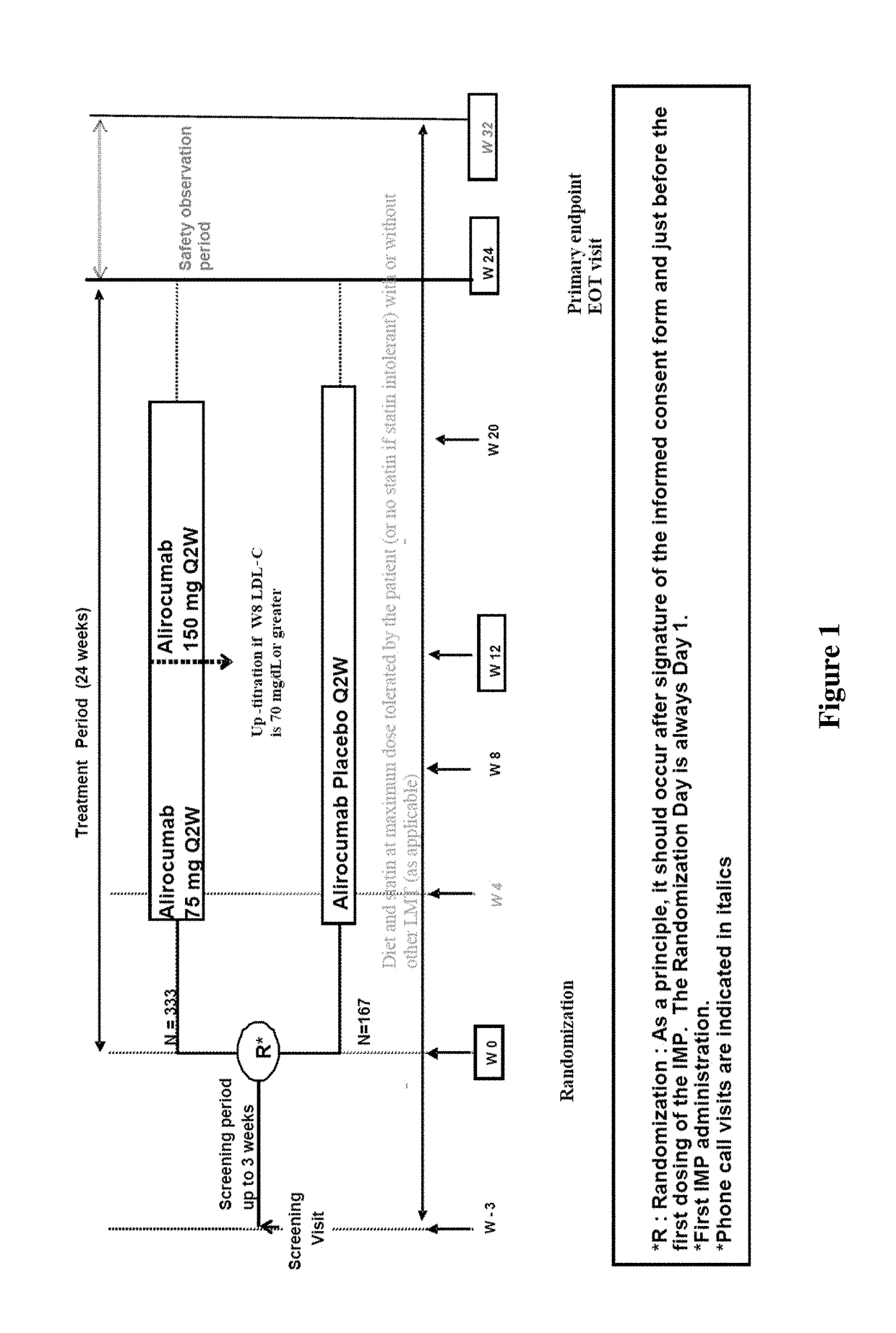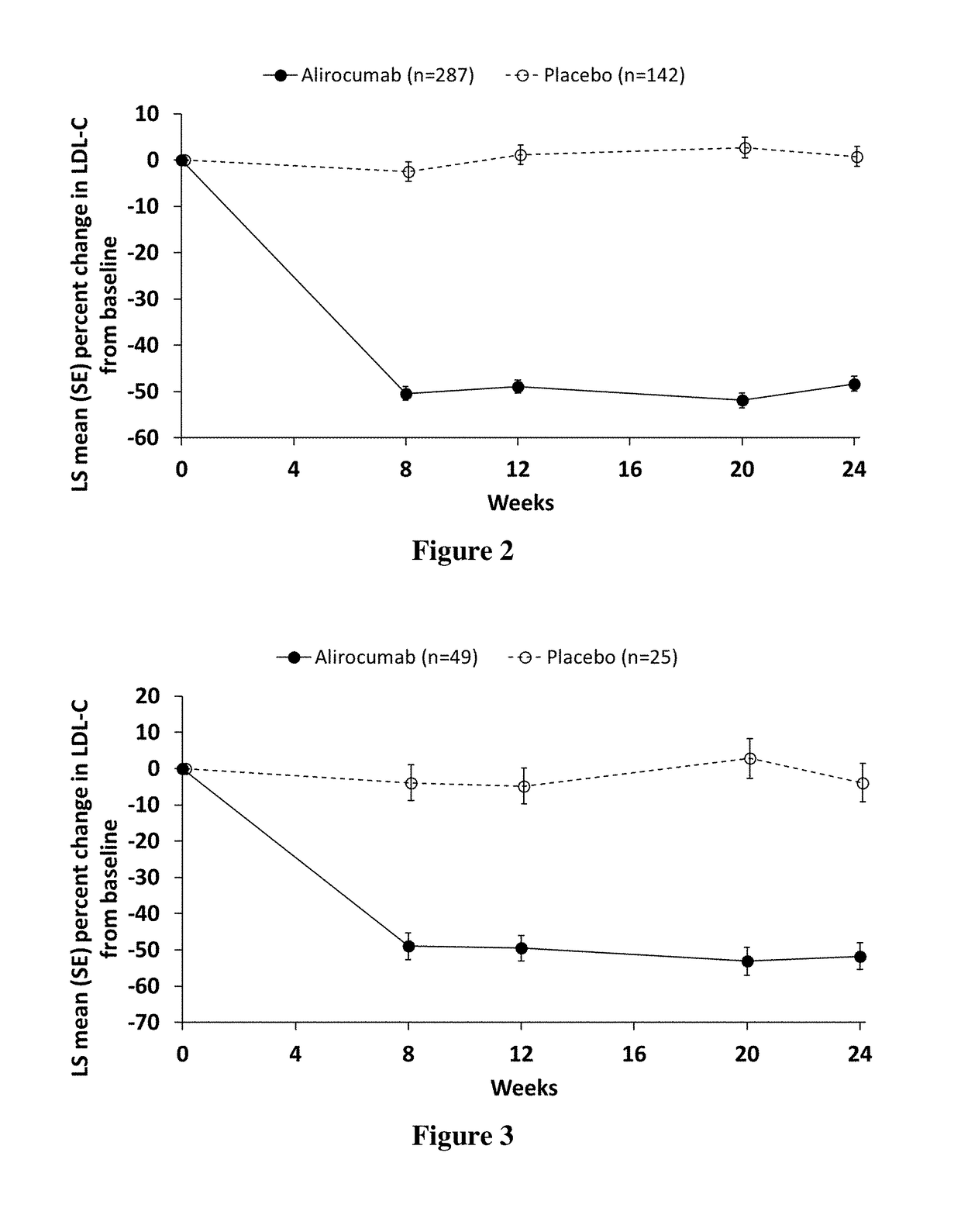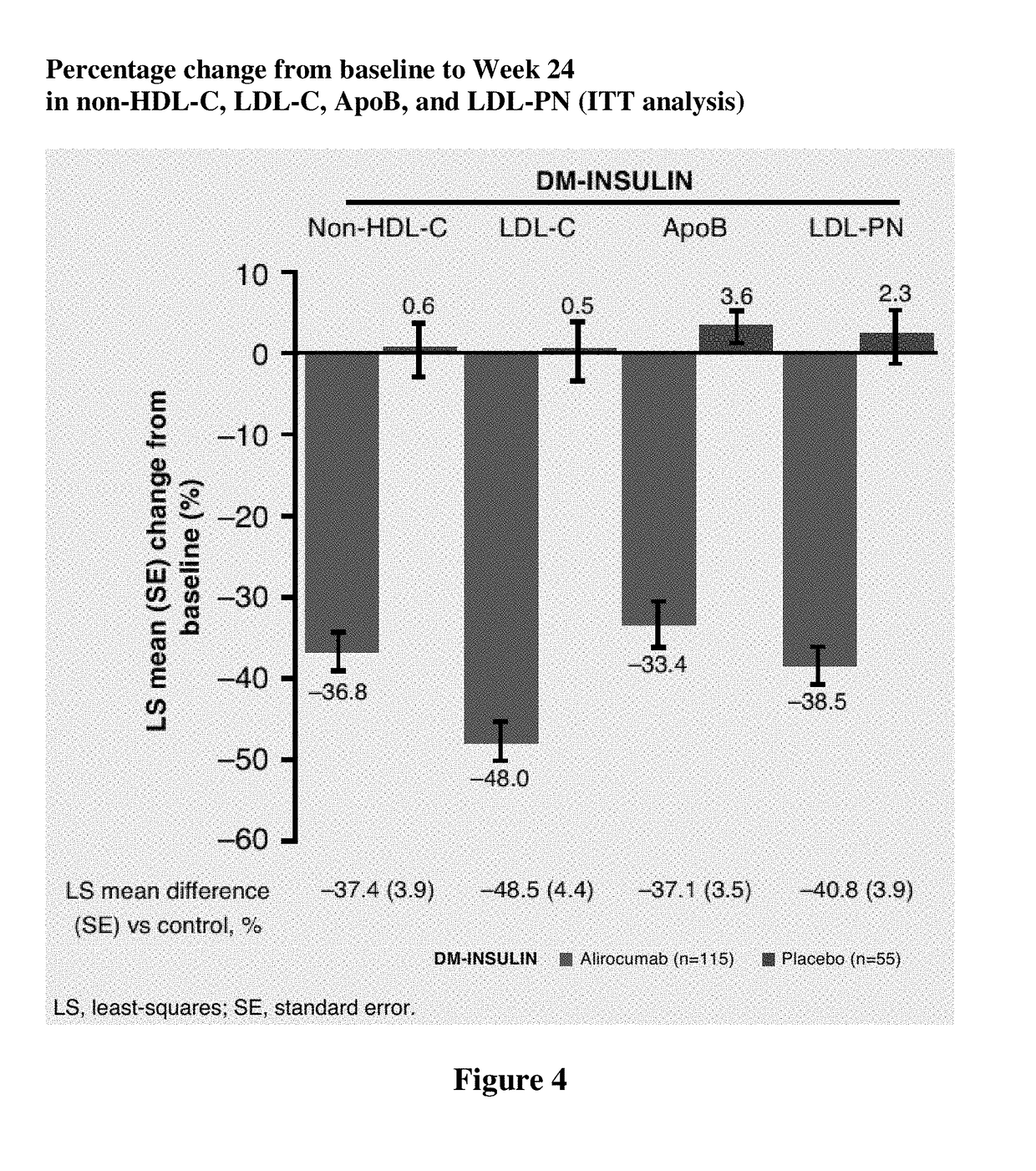Methods for treating hyperlipidemia in diabetic patients by administering a pcsk9 inhibitor
a technology of pcsk9 and diabetic patients, which is applied in the field of pcsk9 inhibitors, can solve the problems of high cardiovascular risk of patients, achieve the effects of reducing the l reducing the non-hdl-c level of patients, and reducing the apoc3 level of patients
- Summary
- Abstract
- Description
- Claims
- Application Information
AI Technical Summary
Benefits of technology
Problems solved by technology
Method used
Image
Examples
example 1
n of Human Antibodies to Human PCSK9
[0261]Human anti-PCSK9 antibodies were generated as described in U.S. Pat. No. 8,062,640. The exemplary PCSK9 inhibitor used in the following Example is the human anti-PCSK9 antibody designated “mAb316P,” also known as “REGN727,” or “alirocumab.” mAb316P has the following amino acid sequence characteristics: a heavy chain comprising SEQ ID NO:5 and a light chain comprising SEQ ID NO:9; a heavy chain variable region (HCVR) comprising SEQ ID NO:1 and a light chain variable domain (LCVR) comprising SEQ ID NO:6; a heavy chain complementarity determining region 1 (HCDR1) comprising SEQ ID NO:2, a HCDR2 comprising SEQ ID NO:3, a HCDR3 comprising SEQ ID NO:4, a light chain complementarity determining region 1 (LCDR1) comprising SEQ ID NO:7, a LCDR2 comprising SEQ ID NO:8 and a LCDR3 comprising SEQ ID NO:10.
example 2
zed, Double-Blind, Placebo-Controlled, Parallel Group Study to Evaluate the Efficacy and Safety of Alirocumab in Insulin Treated Patients with Type 1 or Type 2 Diabetes and with Hypercholesterolemia at High Cardiovascular Risk not Adequately Controlled on Maximally Tolerated LDL-C Lowering Therapy
Introduction
[0262]More than 380 million people worldwide have diabetes, most of whom will die from cardiovascular disease (CVD). Compared to people without diabetes, those with diabetes are at higher risk of developing CVD, develop associated clinical complications and at an earlier age, and have shortened life expectancy by about 6 to 7 years. In addition to the high human cost of disease, CVD contributes greatly to the overall healthcare expenditure in these patients.
[0263]This study, named Odyssey DM-Insulin, included adult patients with Type 1 or Type 2 diabetes mellitus on insulin therapy with hypercholesterolemia at high cardiovascular (CV) risk that was not adequately controlled on a...
example 3
of Individuals with Type 2 Diabetes Mellitus and ASCVD from Odyssey DM-Insulin Clinical Trial
[0407]Individuals with diabetes often have high levels of atherogenic lipoproteins and cholesterol reflected by elevated low-density lipoprotein cholesterol (LDL-C), non-high-density lipoprotein cholesterol (non-HDL-C), apolipoprotein B (ApoB), and low-density lipoprotein particle number (LDL-PN). Presence of atherosclerotic cardiovascular disease (ASCVD) increases the risk of future cardiovascular events.
[0408]In this analysis, we evaluated the efficacy and safety of alirocumab among individuals with T2DM, high LDL-C, or non-HDL-C, and established ASCVD receiving maximally tolerated statin in the DM-Insulin study. DM-Insulin study participants with ASCVD and T1 DM were not included in this analysis due to the low number of individuals in this group (alirocumab: n=11; placebo: n=5). As used in this Example, ASCVD was defined as coronary heart disease (CHD; acute and silent myocardial infarct...
PUM
| Property | Measurement | Unit |
|---|---|---|
| Time | aaaaa | aaaaa |
| Time | aaaaa | aaaaa |
| Mass | aaaaa | aaaaa |
Abstract
Description
Claims
Application Information
 Login to View More
Login to View More - R&D
- Intellectual Property
- Life Sciences
- Materials
- Tech Scout
- Unparalleled Data Quality
- Higher Quality Content
- 60% Fewer Hallucinations
Browse by: Latest US Patents, China's latest patents, Technical Efficacy Thesaurus, Application Domain, Technology Topic, Popular Technical Reports.
© 2025 PatSnap. All rights reserved.Legal|Privacy policy|Modern Slavery Act Transparency Statement|Sitemap|About US| Contact US: help@patsnap.com



